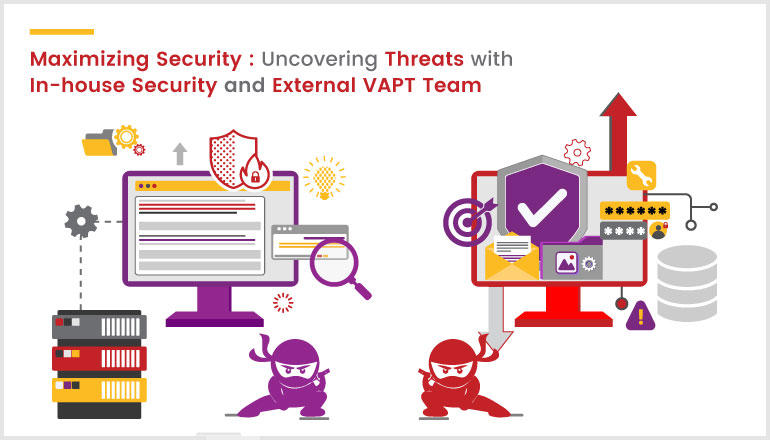As pentesters, we obtained approval from a company for infrastructure VAPT (Vulnerability Assessment and Penetration Testing). However, the client later informed us that they no longer required our services as they had purchased a new Nessus tool to test their assets themselves.
After a few months, they reached out to us, having fallen victim to a ransomware attack. This incident prompted us to conduct research and uncover the reasons behind their security breach. We discovered that they had neglected to fix bugs in the current update and were relying on an outdated version. This highlights the limitations of relying solely on basic tool knowledge and scanning. In contrast, professional pentesters continuously adapt to daily updates in cybersecurity, employing various techniques to provide fast and robust output for securing organizations.
The Importance of Qualified Security Specialists:
Engaging highly qualified security specialists for safety testing is comparable to visiting a doctor for an annual health check. Although you may feel perfectly healthy, specialists can perform tests to uncover threats of which you may be unaware. VAPT is an essential component in ensuring your organization's security.
Difference Between In-house Cybersecurity and External Penetration Testing Teams:
|
Categories |
In-house Cybersecurity Team |
External Penetration Testing Team |
|
Access to Information |
Legitimate access to the organization's information system |
No authorized access to the organization's information system |
|
Testing Procedures |
Regular security audits and common testing |
Uncover vulnerabilities from an external attacker's perspective |
|
Cost |
Higher cost due to trained personnel and necessary equipment |
Cost-effective by outsourcing testing to external agencies |
|
Areas of Focus |
Internal threats such as computers, workstations, and wireless networks |
External threats and attacker attitude |
|
Testing Frequency |
Ongoing monitoring and regular penetration testing |
Occasional testing with clear scope and thorough planning |
|
Knowledge and Expertise |
Extensive knowledge of the organization's information system |
Highly qualified professionals with diverse network experience |
|
Customization and Business Logic Testing |
Primarily standardized procedures |
Comprehensive assessment and focus on business logic vulnerabilities |

Analyzing the Differences:
In the scenario mentioned earlier, the internal team primarily focused on mitigating internal threats within their organization. However, they were unaware of the external attacks that could cause significant damage and data loss. External pen testers, being globally certified professionals in cybersecurity, can provide standard pentesting results that exceed expectations.
Depth of External Security Testers:
The reason the company stopped our service was that both parties were using the Nessus tool. They believed they could test their network's security themselves using Nessus documentation. However, from an external perspective, only 30% of the scanning is done using Nessus, while the remaining 70% is conducted manually and in unique ways based on cybersecurity standards. This disparity in approach and expertise leads to significantly different output results between in-house cybersecurity teams and external pentesters. External testers utilize their diverse methodologies, experience with different types of networks, and the ability to address new daily attacks and problems. Their certification ensures they deliver the most accurate output, helping organizations enhance their security posture.
Customization and Business Logic Infrastructure VAPT:

External teams focus on customization testing, which allows for a comprehensive assessment of the security landscape and helps identify vulnerabilities and flaws that automated scanning or standardized procedures may miss. By engaging an external team, organizations can benefit from customized approaches to discovering vulnerabilities and solving them effectively. Additionally, external testers place emphasis on business logic, as 80% of attacks on organizations result from flaws in business logic, leading to significant losses. This specific focus on the business logic layer in penetration testing helps identify vulnerabilities in rules, processes, and workflows that govern how the infrastructure functions and manages data. External pentesters often develop their own tools and employ the latest technology for infrastructure VAPT testing, leveraging advancements in the cybersecurity field to detect and address security concerns effectively.
Key Points for Customization and Business Logic VAPT:
- Increases business continuity
- Protects clients, partners, and third parties
- Prevents financial damage
- Tests cyber-defense capabilities
Conclusion:
In conclusion, relying solely on an in-house security team is insufficient for maintaining network and digital asset security. Organizations need to engage external teams that employ a combination of automated and manual testing techniques to detect internal and external dangers, identify new vulnerabilities, and prevent unauthorized access. Skilled external security testers investigate issues, provide critical recommendations, and offer guidance on mitigating threats. The final report from external pentesters helps organizations rectify errors and enhance their overall security posture.


